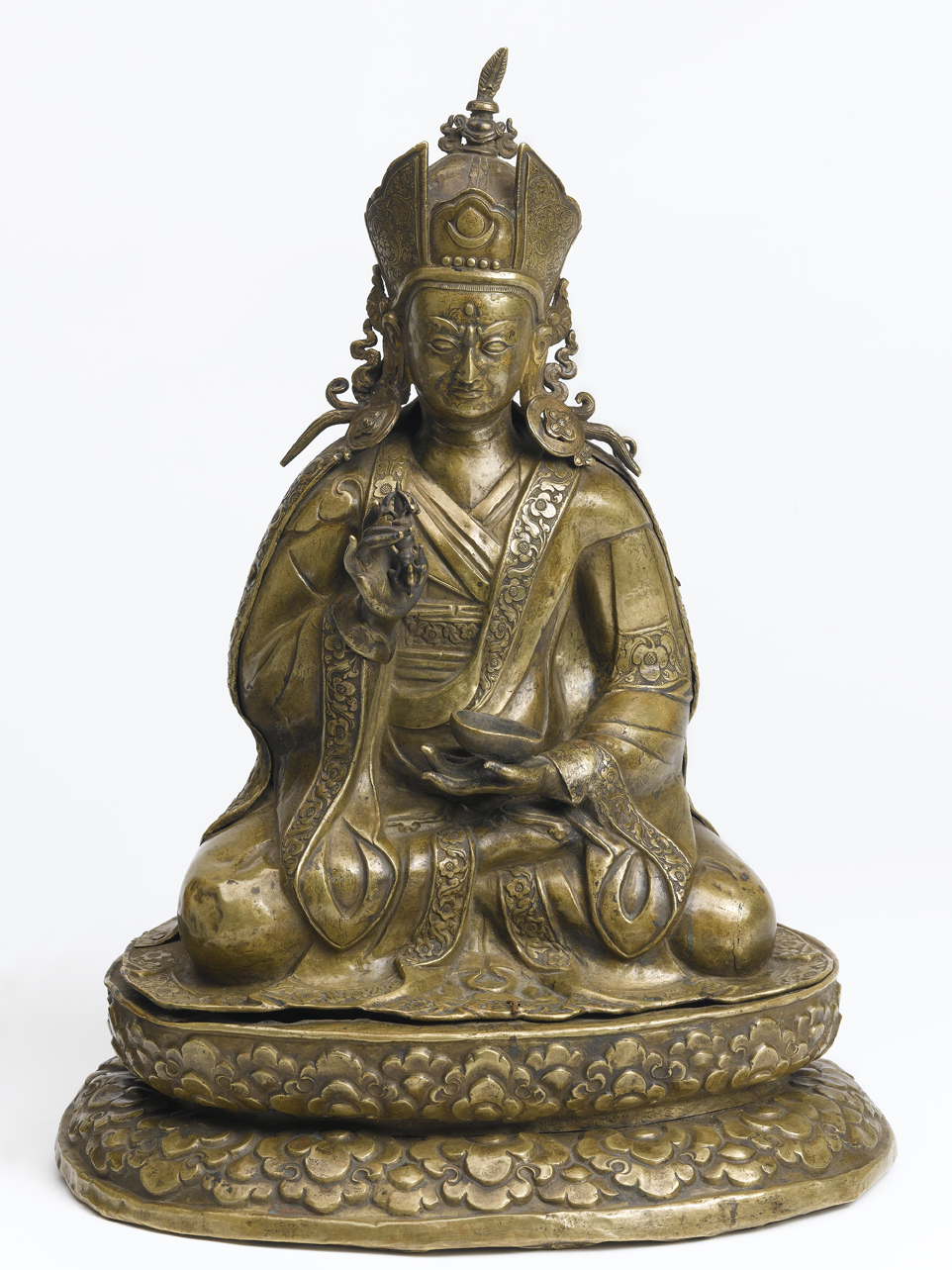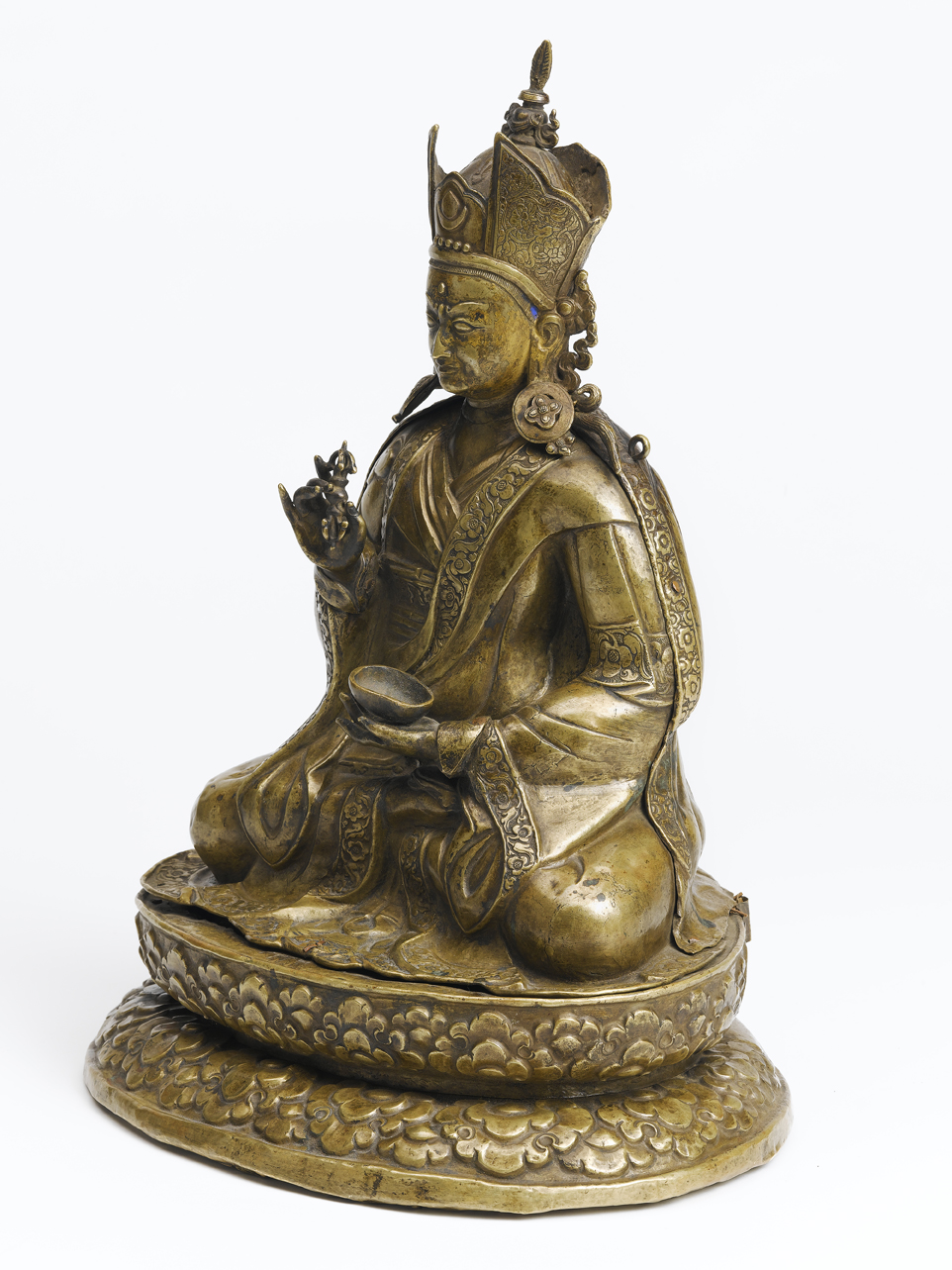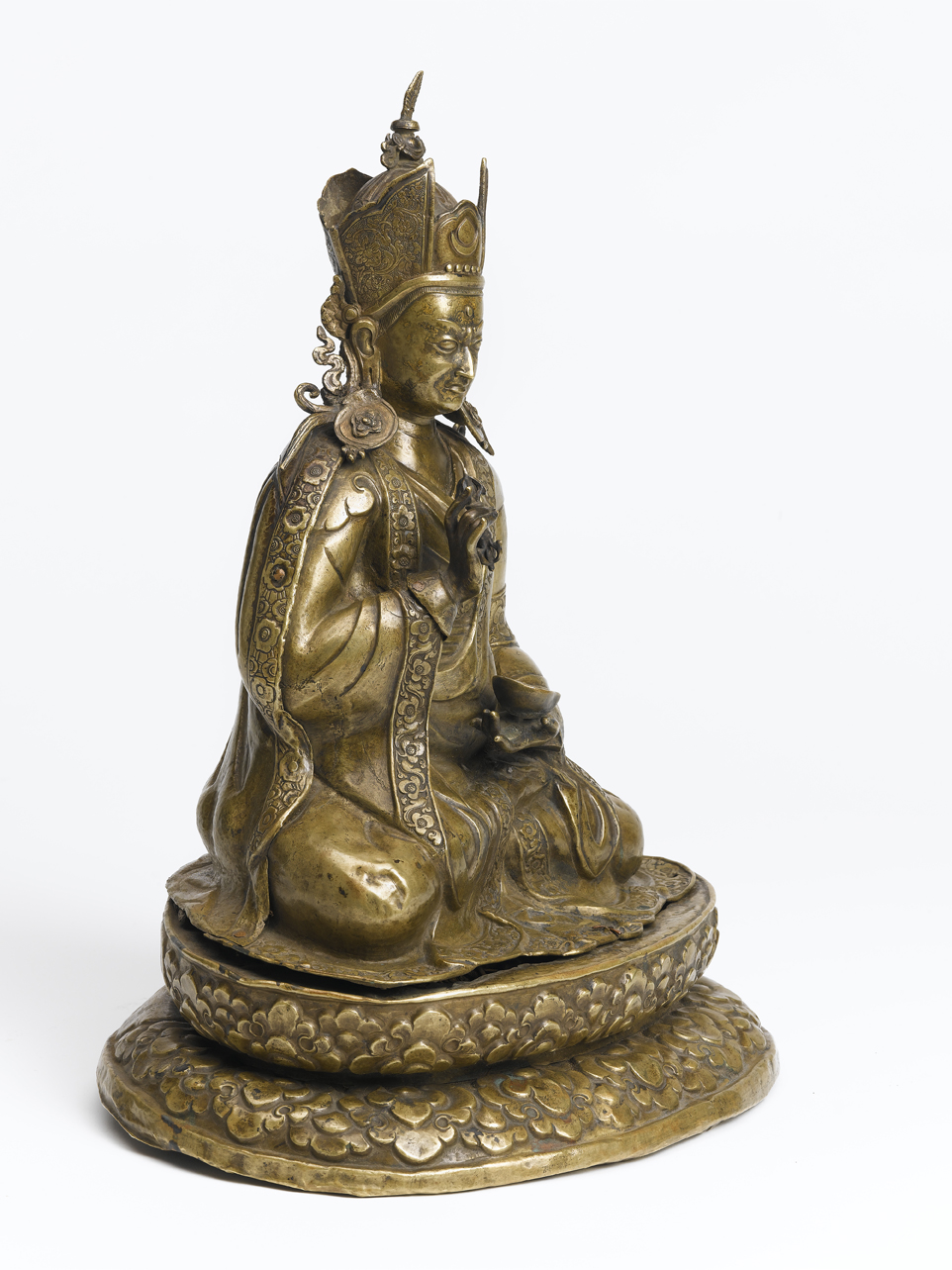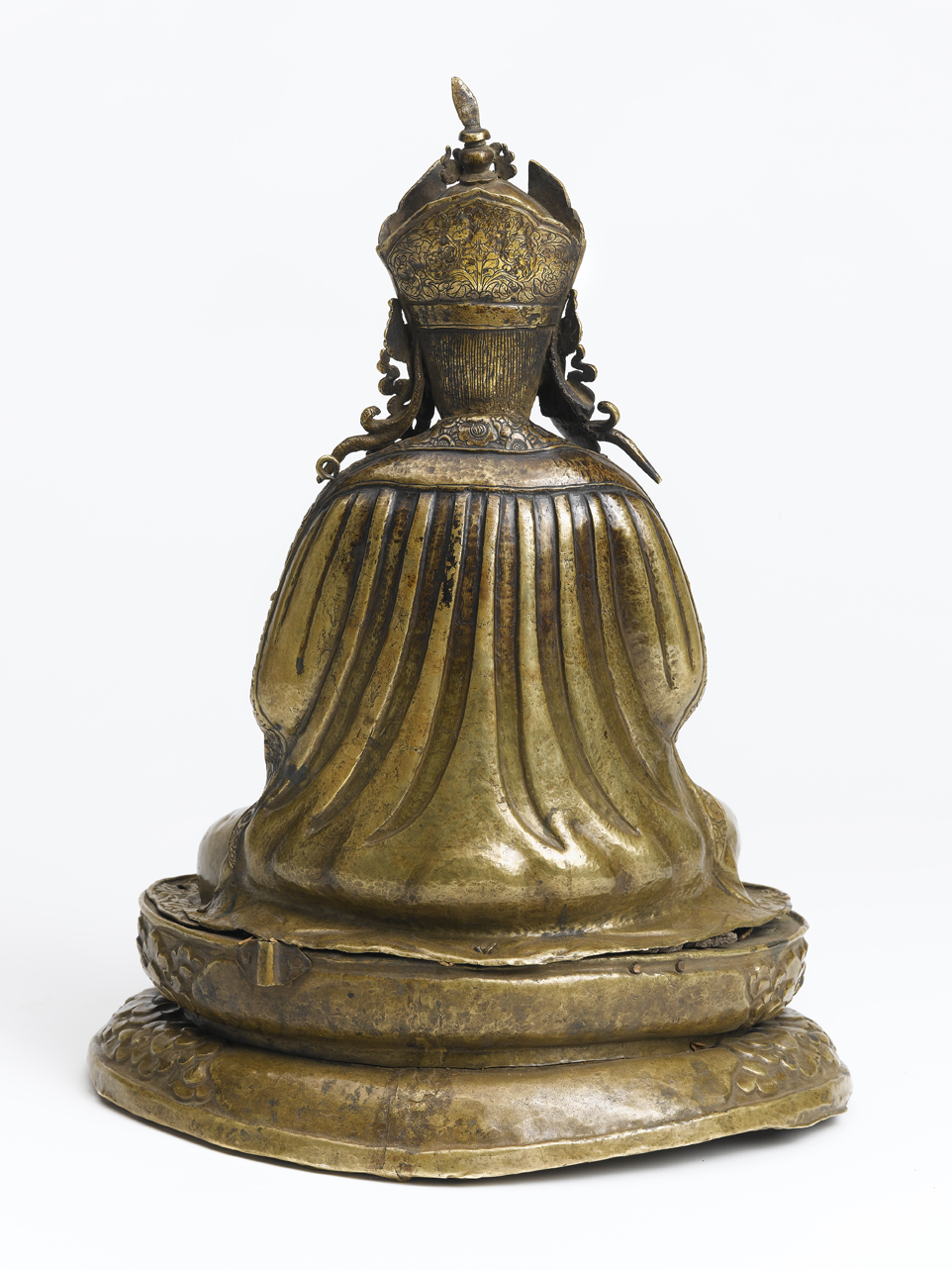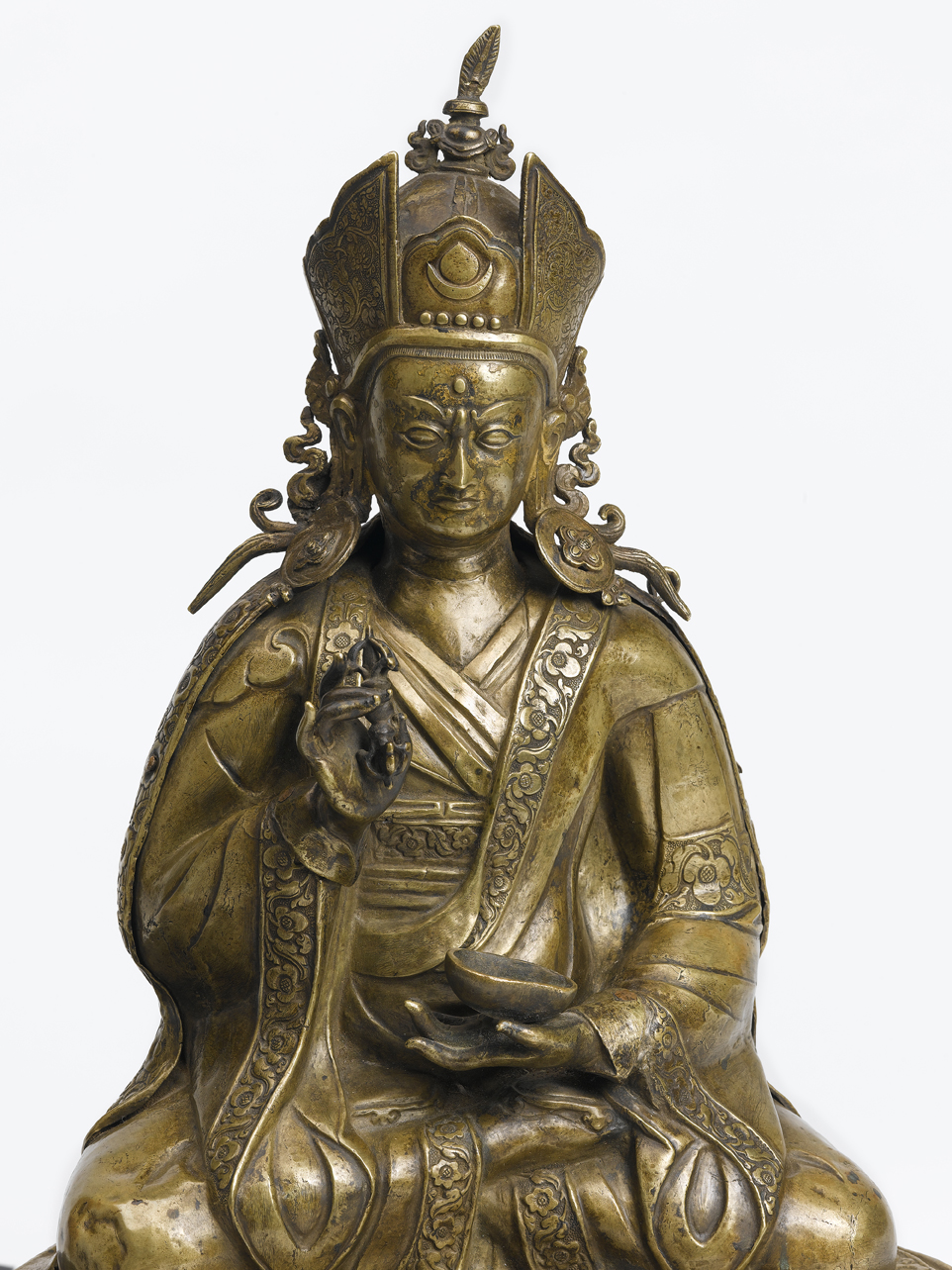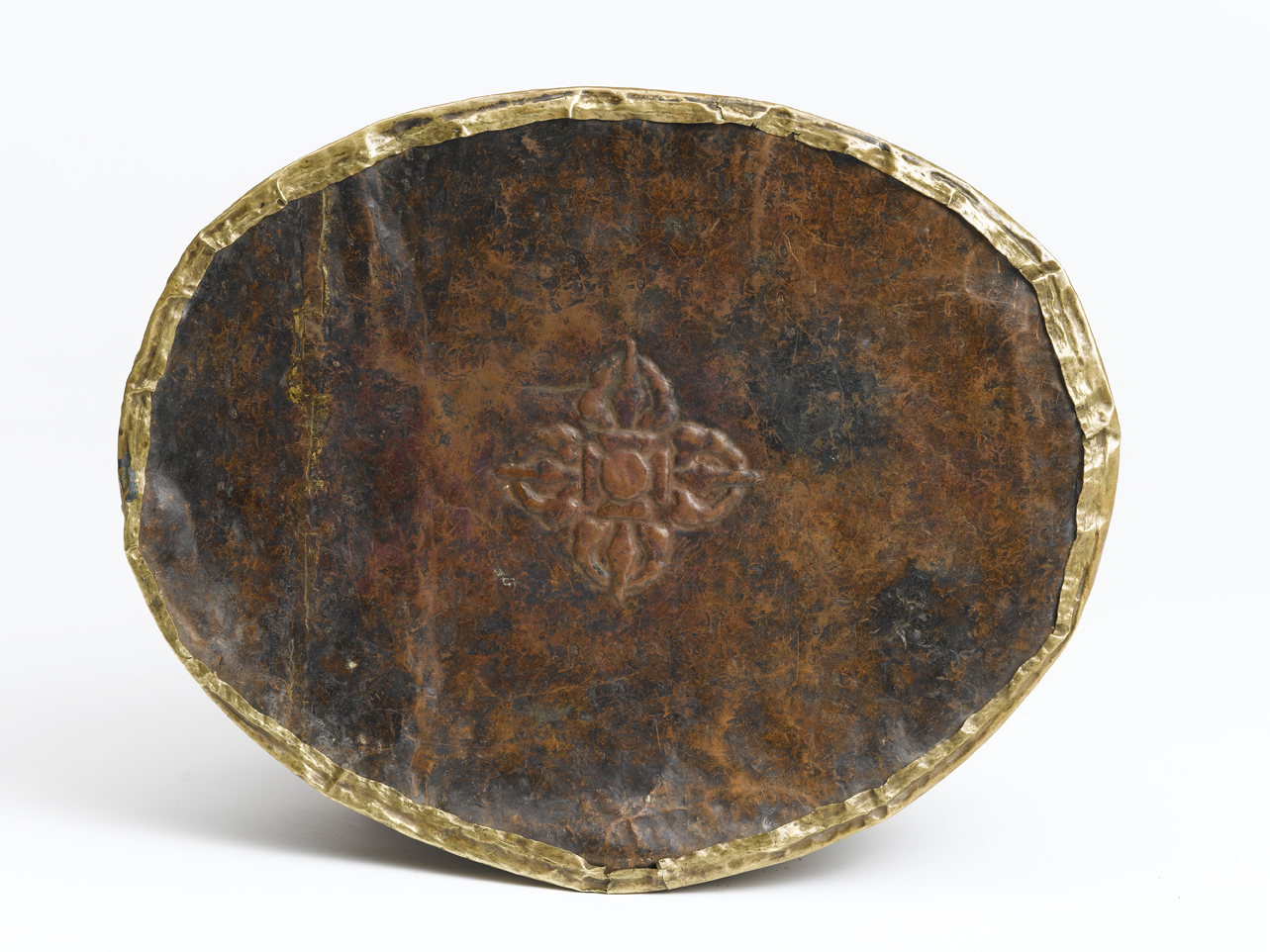Padmasambhava(Guru Rinpoche) Regione del Dolpo (Dhol-wa), Etnia Kampa Parte del regno Guge nel X Sec.Nepal - copper alloy - height 17.5 inc -54cm - 18th centuryseated in padmasana on an acanthus throne, his hands holding a vajra and kapala, wearing elaborate brocaded robes, his ornate cap with feathered final. he Indian yogi Padmasambhava lived during the latter half of the 8th century and his teachings are the basis of the religious tradition known as “The Old One” (rNying-ma), which worships him as a second Buddha. According to Tibetan sources he travelled to Tibet on the invitation of King Tri Songde-tsen (Khri Srong-lde-brtsan), who wanted him to subdue a demon that was hindering the construction of the first Buddhist monastery in Tibet, that of Samye (767-779), under- taken under the direction of the great Indian sage and scholar Shântarakshita, from the prestigious Buddhist university of Nâlandâ. The two masters, one a learned scholar, the other a sorcerer and exorcist, represented two very different forms of practice and devotion. Shântarakshita’s line was academic and monastic (1), Padmasambhava’s ritual and esoteric. Although Tibetans acknowledged the intellectual and spiritual gifts of both, it was Padmasamabhava who aroused greater interest. That was particularly true of the people amongst whom he also took on the role and importance of a new Buddha over the years. Indeed, despite being sent away from Tibet after being accused of witchcraft shortly after the con- struction of Samye (2), the memory of this enigmatic master lasted during the period between the first and second spread of Buddhism in Tibet (842 - c. 1000 AD), emerging again subsequently to develop into a particular tantric school which gained a great following. Padmasambhava is credited with introducing magical and spiritual practices to Tibet, in which the ritual peg known as kîla was used (see no. 15).
Provenience: Comes from à privat collection from Switzerland purchased before 1970
ALC (Free Circulation) |
